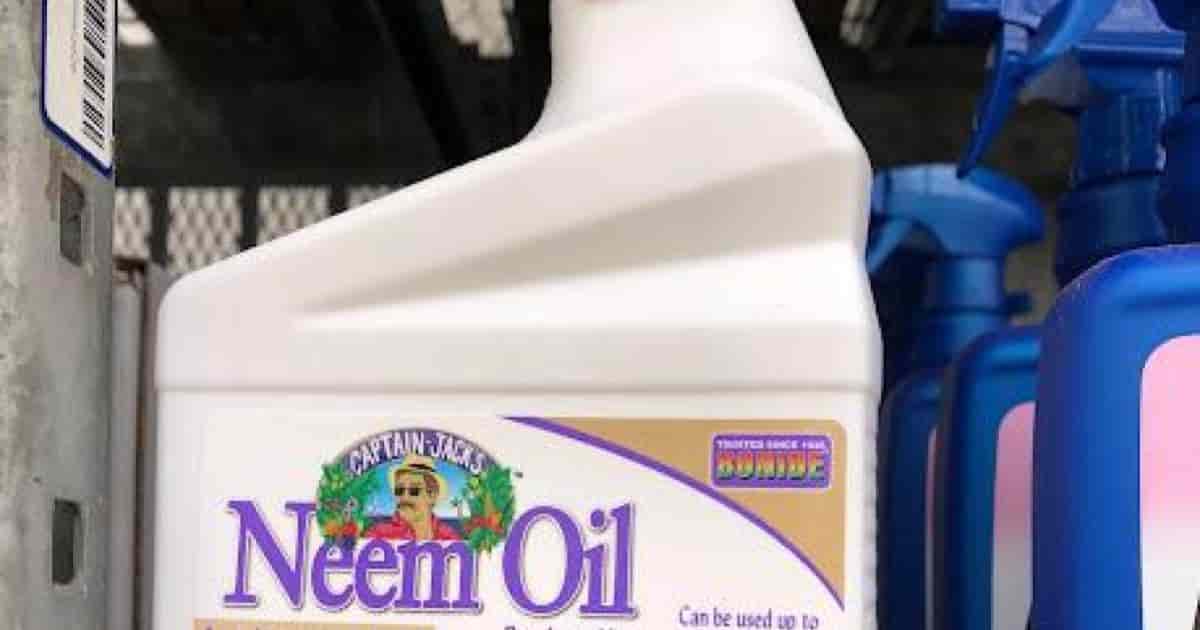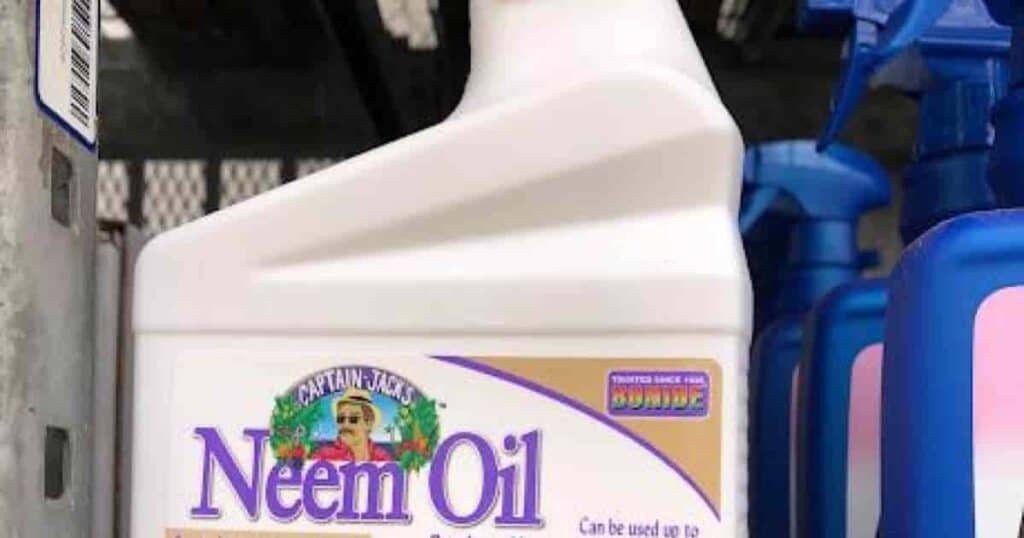[ad_1]
Neem oil is an excellent, all-natural anti-fungal, anti-pest product in your gardening arsenal. And it’s important to understand that even though this is a natural product, it is not entirely harmless.
Improper use of Neem oil, or use on sensitive plants, can result in burned leaves. Therefore, it’s always wise to test an inconspicuous part of a plant before spraying it with Neem oil.
Furthermore, you should avoid using Neem oil on young plants and those stressed recently. Herbs and plants with wispy, delicate leaves are also sensitive to Neem oil.
In this article, we discuss what plants not to use Neem oil on. Read on to learn more.
Some Plants Are Too Tender For Neem Oil
Plants that are always sensitive to Neem oil include but are not limited to:
- Marjoram
- Oregano
- Caraway
- Cilantro
- Arugula
- Spinach
- Lettuce
- Parsley
- Thyme
- Basil
- Peas
- Dill
Most herbs and green leafy veggies are sensitive to Neem oil use.
Remember to carefully read the labels of any products you are considering using. Always test any new products on small, inconspicuous areas of plants.
Wait 24 hours and check for signs of adverse reaction before using Neem oil products on entire plants.
Neem Oil Must Coat Plant Surfaces Thoroughly To Work
Some plants cannot benefit from using Neem oil because of their structure. Plants with lots of hiding places for insect pests may not allow good distribution of Neem products.
For example, plants with very rough or fuzzy leaf surfaces or masses of sharp needles may block the distribution of Neem oil while sheltering pests from the product.
How Does Neem Oil Work?
When you spray Neem oil on your plants, it provides a layer of oil that contains the natural pesticide, Azadirachtin.
This coating kills pests in two ways. First, the oil content of the product suffocates them, and the pesticide repels pests and disrupts their growth cycle.
Insects that come in direct contact with the product or eat vegetation coated with it are negatively impacted.
How Does Neem Oil Damage Plants?
The oil aspect of the product can directly burn delicate leaves. If applied on a hot, sunny day, it can amplify the sun’s rays and burn even very rugged leaves.
Furthermore, the product component that disrupts insects’ growth cycles can also disrupt the growth cycles of some plants.
Incorrect or excessive use of Neem oil can cause stunted growth in some plants.
Can You Save Plants That Neem Oil Has Damaged?
If a plant shows signs of Neem oil damage, rinse it off to remove excess product. Then, give the plant a good watering.
If it’s a container plant, move it to a sheltered area where it will receive bright, indirect sunlight. If it’s planted in the landscape, provide some shelter from harsh sunlight.
Prune off damaged leaves. They will not recover, but new leaves should not be affected.
When And How Should You Use Neem Oil?
You can use Neem oil at any time of year. For best results, use the product as a preventative treatment every week. Apply it early in the morning before the sun gets too fierce.
What’s The Best Neem Oil Product?
You are really best off mixing up your own Neem oil spray using high-quality, cold-pressed Neem oil.
Doing this ensures you get the best quality active ingredients, gives you absolute control over the strength of the product you use, saves you money, and limits the number of discarded plastic spray bottles tossed into the environment.
DIY Neem Oil Spray
Follow this recipe to make your own effective Neem oil spray at home:
In a one-quart spray bottle, combine the following:
- A quart of warm water
- Half a teaspoonful of dish soap or castile soap
Shake the spray bottle gently to combine the first two ingredients, and then add a teaspoonful of Neem oil
Shake vigorously to mix the ingredients thoroughly.
Use your homemade Neem oil spray right away while it is still warm. Shake the bottle frequently during use to keep the ingredients well mixed.
You can store any leftover spray in a cool, dark place (e.g., the refrigerator), but you’ll need to warm it back up before using it again.
You can do this by setting the bottle into a bowl of hot water for a few minutes before shaking and spraying.
The recipe above is just right for use on houseplants. In addition, it is a good strength as a weekly preventative spray.
You can double the Neem oil you wish to use in your yard and garden. This is a good idea if you have a pest infestation in progress.
Why Use Neem Oil?
One of the best things about using Neem oil as a pesticide or fungicide in your yard and garden and on houseplants is that it is not aggressively harmful to beneficial insects, birds, and other desirable yard and garden denizens.
It is not harmful to the environment and does not pose a threat to waterways. Neem oil is safe to use on food crops. It breaks down quickly, and it is actually beneficial to the soil.
[ad_2]
Source link










 + Planting String of Watermelon Succulents
+ Planting String of Watermelon Succulents  with Garden Answer
with Garden Answer


